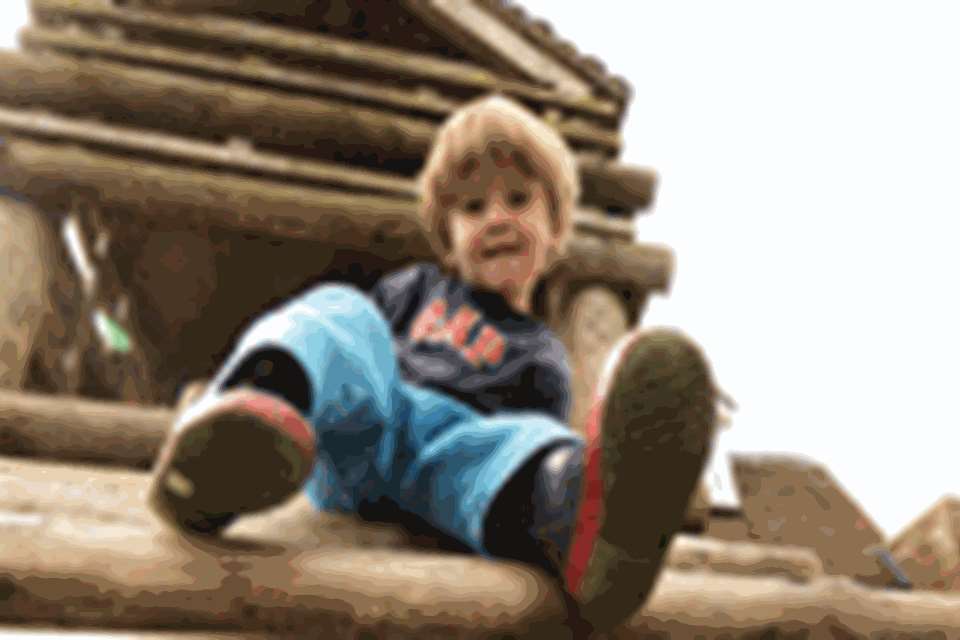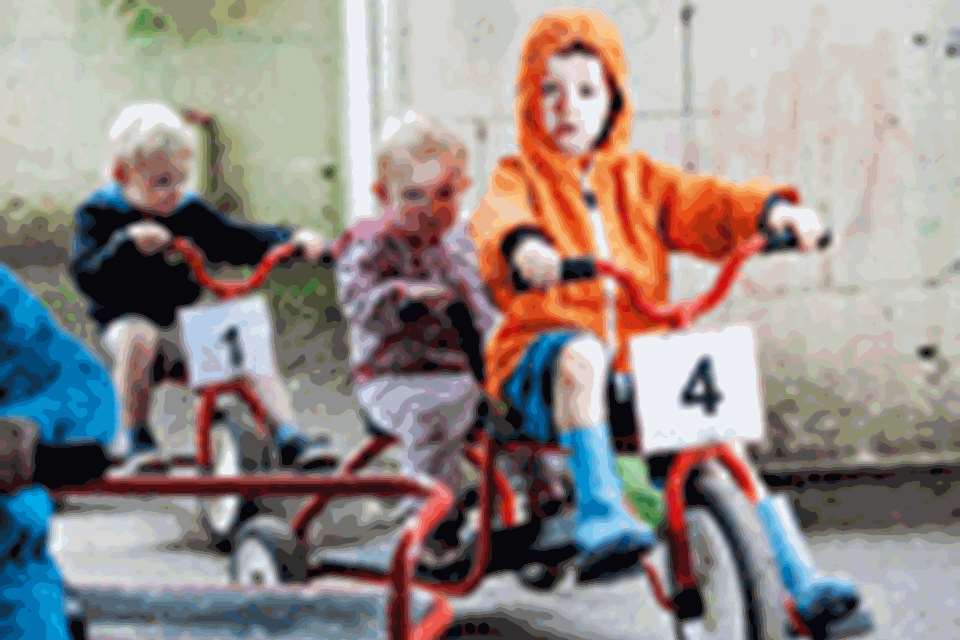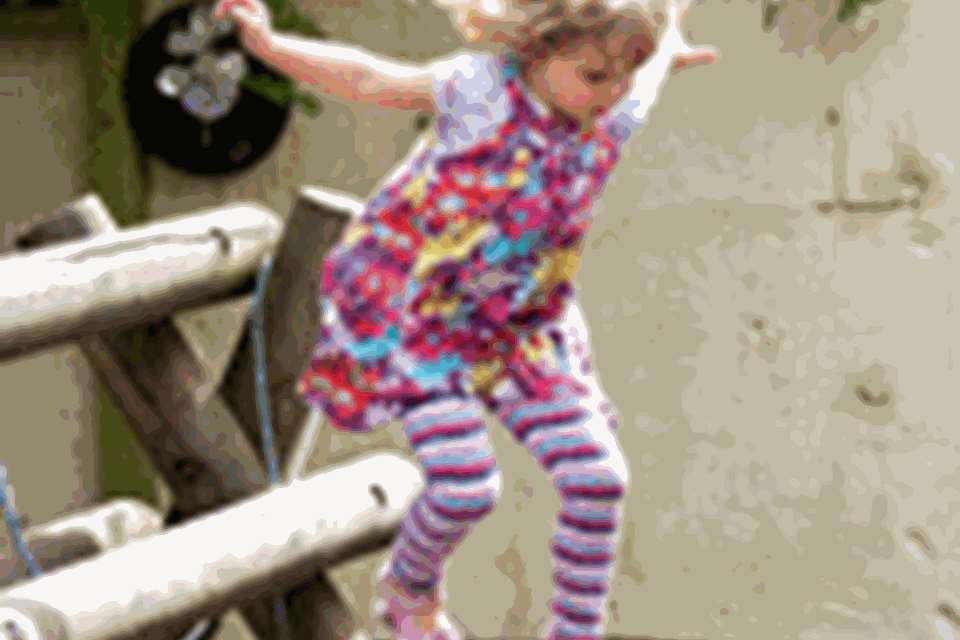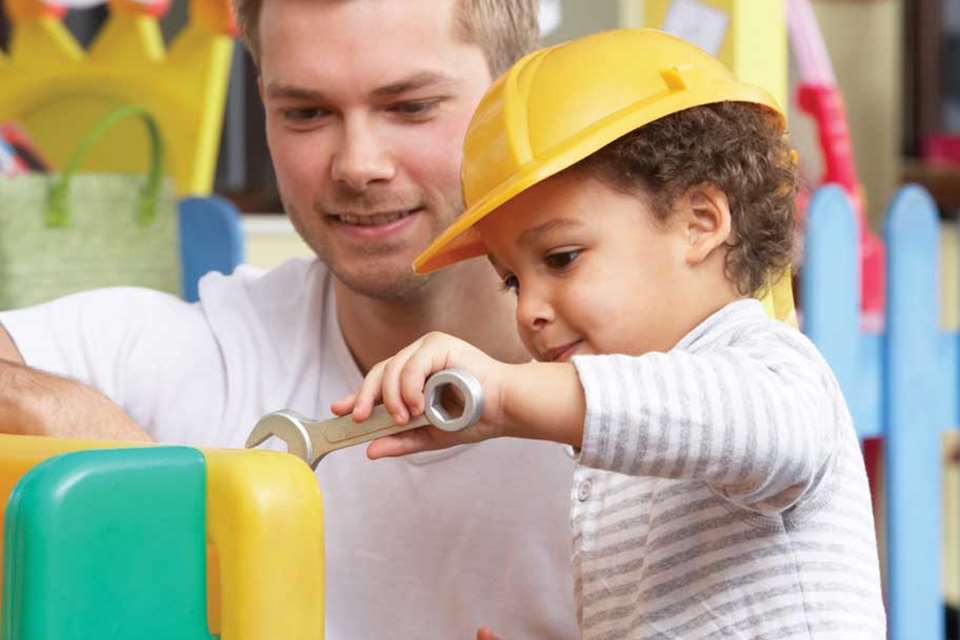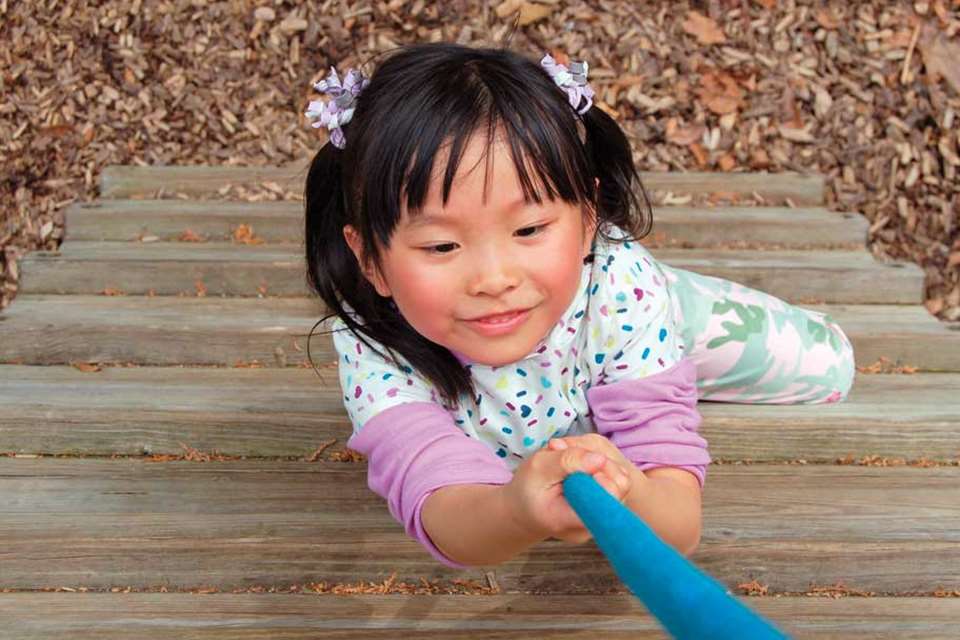Enabling Environments: Post-walking physical skills - Run for it!
Lala Manners
Monday, July 28, 2014
Walking and running are both challenging locomotor skills for children to master. But the right approach can maximise opportunities for learning, says Lala Manners.

What is it about running - more than any other physical activity - that young children enjoy so much? Is it the freedom to push personal boundaries, the risks associated with speed, or the quiet satisfaction experienced through competition and achievement and the maturity gained through independence and decision-making?
Running emerges from walking and is possibly the most demanding locomotor/travelling skill for children to master because it demands a wide range of competencies. These are:
- balance
- muscle strength
- co-ordination
- agility
- timing and
- focus.
Ability and enjoyment of running will depend on environment, opportunity, peer group interest, adult affordance, basic physical make-up and temperament.
There will always be natural sprinters and endurance athletes - those more suited to team pursuits or solitary endeavours - and the constraints of time and space will always be a factor in the choice of physical activities children experience.
However, with careful planning and underpinning knowledge of the skills needed to run economically and effectively, the opportunities for children to rehearse and refine these skills may be maximised.
Walking and running activities help children to develop:
- co-ordination
- control
- spatial awareness
- confidence
- the ability to negotiate their way around obstacles
- confidence, and
- the ability to manage changes in speed and direction without difficulty.
The confidence they gain as they become stronger, faster and more agile will be demonstrated in their growing ability to use running in their independent play. And the skills that they acquire will also be transferred to the other environments they experience, making children safer and more able to make informed choices regarding opportunities for physical activity.
CHILD DEVELOPMENT
At about 18 months most children will begin to run, and by 24 months will be reasonably competent runners. Between four and six years, a more mature and fluent form develops and running will be used in independent play, so that by six most children will be able to walk with toes pointed forwards and their weight evenly distributed over both feet.
Early Years Outcomes, the non-statutory guide to child development, lists the following markers.
22-36 months
- Runs safely on whole foot.
- Walks upstairs or downstairs holding on to a rail two feet to a step.
30-50 months
- Moves freely and with pleasure and confidence in a range of ways, such as slithering, shuffling, rolling, crawling, walking, running, jumping, skipping, sliding and hopping.
- Walks downstairs, two feet to each step, while carrying a small object.
- Runs skilfully and negotiates space successfully, adjusting speed or direction to avoid obstacles.
40-60+ months
- Early learning goal - moving and handling: children show good control and co-ordination in large and small movements. They move confidently in a range of ways, safely negotiating space.
COMPETENCIES
To fulfil these expectations - and if running is to be accommodated within settings safely - the following underpinning competencies need to be addressed:
Lower body strength, as a significant level of muscle strength is needed in the legs to project the body off the ground and to maintain speed going forwards. The muscles around the ankle joints must be strong enough to maintain stability.
Upper body strength is needed throughout the torso to maintain the optimum position for fluent movement - and also in the arms to assist forward propulsion.
Balance and agility are essential for the management of different terrains - going up and down hill, avoiding or accommodating obstacles, sending and receiving apparatus at speed - but mainly for safety by being able to react quickly to instructions.
Timing and rhythm develop economy of effort and the ability to work in a team at speed and respond to directions.
PLANNING
Given that space and safety are major issues when offering opportunities for children to run, keep in mind the necessary underpinning competencies and focus on walking.
All the skills needed to run fluently may be addressed through walking activities, as they provide an excellent alternative if the environment is not supportive of moving at speed.
- Aim for between five and 15 minutes when planning a walking/running session, and for small groups of five to eight children.
- Give very clear instructions (with a maximum of three) and demonstrate exactly what you expect. Decide on a 'STOP-HALT-FREEZE' drill - this is essential so children will stop immediately when you ask. Practise this before every session you plan that includes walking or running.
- Check clothing and footwear is suitable
- Be aware of differences in height/strength of the group and organise accordingly.
- Define the area you are using carefully - ensure everyone has noted this.
- Make sure no more than two or three children are moving at speed at once.
ACTIVITIES
Walking
- Roll out lines of wide masking tape on the floor. Ensure the lines meet up and incorporate changes in direction.
- Ask the children to walk forwards and backwards on the tape, then with their arms in different positions, such as above their heads or on their shoulders, tummies or knees. This will encourage them to place their feet precisely, and so develop balance and spatial awareness as they negotiate around each other.
Demonstrate walking with your knees lifted high and your arms swinging by your side, as this is good for lower body strength and imitates the running action. - Walk heel to toe with small and precise steps, then on toes only, then on heels. This will enhance strength in the foot and muscles surrounding the ankle joint.
- Add music. The children walk on the tape, then when the music stops they try different balance positions, such as positioning two hands on the tape, one foot in the air or their head on the tape. Encourage the children to make their own contributions. This activity will develop timing ability and confidence in their own ideas.
- If you have a large group, always give those who are waiting something to do while the others are walking - such as clapping, bouncing on their knees, pointing or flexing their feet or drumming their feet on the floor.
Running
Running at this age is about speed, and speed is difficult to accommodate in confined spaces. Children also get overheated and there are always the 'silly' elements that push the boundaries, so planning is essential. So:
- establish and demonstrate a 'STOP' drill
- explain no more than three children will run at one time
- plan an activity for those who are waiting their turn, and
- ensure groups are evenly matched for height and strength.
There are three ways to organise a space for running and this may also be adapted for outdoors.
Circle
- Running in a circle is more demanding of strength and balance than running straight. It is also safer because it slows the children down and they will not bump into anything.Sit in a circle - use masking tape, rope or tights knotted together to define the shape.
- One or two children at a time run around the circle and back to their place. Those waiting will be given a task.
- Run both ways to ensure the children's overall strength is maintained.
- Change the starting and finishing position - for example, kneeling or lying on their tummies.
- Sometimes, add music, as this will develop agility and timing as you stop and start the music.
Line
- Ensure there is enough space for the children to stop safely.
- Demonstrate the finish position - for example, lying on their tummies or backs.
- Be very clear about what you expect and that you will return to walking if they do not comply.
- Never ask the children to run and come back immediately as they get very confused and bump into each other. Ask them to run, wait, then run back. With Foundation Stage children, focus on running forwards. You can begin to introduce relays and teamwork as the children become familiar with the format you develop.
- Be aware that some children deeply dislike being chased and it is not an essential element to include at this early stage of development.
Slalom
Running around obstacles is challenging and enhances balance and agility. The speed at which children run will depend on the spaces between them - the closer together, the slower they will move. This is simple to plan and may be organised either in a circle or straight line formation.
Use anything available as obstacles - for example, chairs, cushions or telephone directories - and demonstrate a clear start and finish position. Use music to encourage timing, particularly for stopping and starting, which is challenging at this stage.
Dr Lala Manners is director of Active Matters, a training company dedicated to physical activity for young children, www.activematters.org
MORE INFORMATION
- British Heart Foundation Early Movers resource pack G609, www.bhf.org.uk/publications/view-publication.aspx?ps=1002163
- Early Years Movement Skills by Mary Chambers and David Sugden
- Early Years Outcomes (DfE, September 2013), www.gov.uk/government/uploads/system/uploads/attachment_data/file/ 237249/Early_Years_Outcomes.pdf
- Experiences in Movement and Music (5th edition) by Rae Pica
- Nursery World guides - for information on promoting children's pre-walking skills, see pieces on creeping and crawling at www.nurseryworld.co.uk/nursery-world/feature/1097589/positive-relationships-parents-guide-creeping-crawling and www.nurseryworld.co.uk/nursery-world/feature/1097588/positive-relationships-home-learning-roll
- Physical Development by Linda Cooper and Jonathan Doherty
- Supporting Physical Development and Physical Education in the Early Years by Jonathan Doherty and Richard Bailey.


